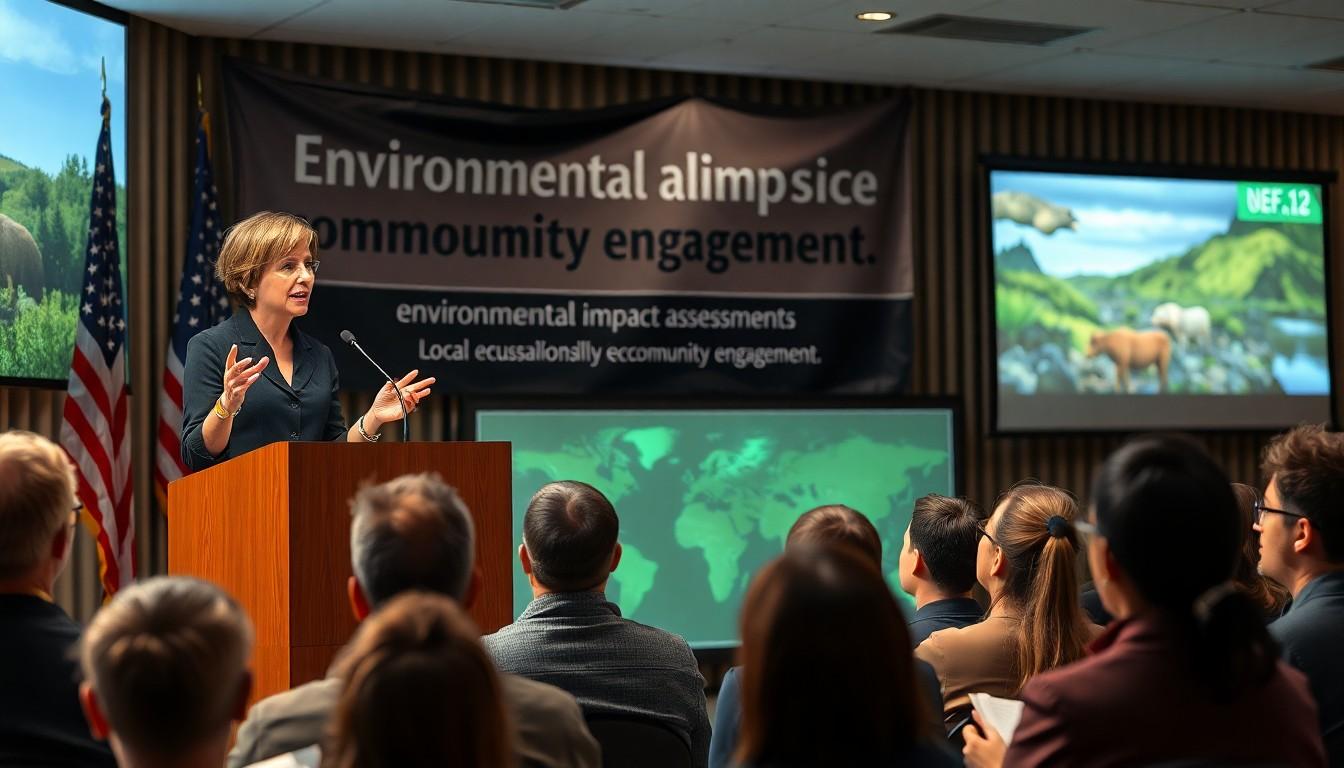Phone:
(701)814-6992
Physical address:
6296 Donnelly Plaza
Ratkeville, Bahamas.

In a world where climate change feels like that one uninvited guest who just won’t leave, staying updated on environmental impact assessments is more crucial than ever. These assessments are like the detective work of the eco-world, uncovering the potential effects of projects before they wreak havoc on Mother Nature. From construction sites to new highways, knowing the environmental consequences can save ecosystems and keep our planet from turning into a hot mess.
As headlines buzz with the latest developments in environmental regulations and assessments, it’s time to dive into the news that matters. Whether it’s a groundbreaking study or a quirky local initiative, understanding these updates can empower everyone to make informed decisions. So grab your eco-friendly popcorn and get ready to explore the fascinating world of environmental impact assessment news—because who said saving the planet couldn’t be entertaining?
Recent updates in environmental impact assessment (EIA) reflect a growing awareness of sustainability issues. Global news highlights various countries implementing stricter regulations to mitigate environmental harm from development projects. Numerous studies showcase the effectiveness of EIAs in identifying potential ecological damage before construction begins.
Significant projects have undergone rigorous assessments, revealing the potential impacts on local wildlife, air quality, and water resources. Different regions emphasize the importance of stakeholder engagement during assessments, ensuring community input on proposed developments. Technologies like Geographic Information Systems (GIS) enhance EIA processes by providing detailed data on environmental conditions.
Stakeholders are increasingly concerned about climate resilience, leading to changes in assessment criteria. New methodologies incorporate climate change projections, making assessments more relevant and forward-thinking. Legislative bodies frequently discuss updates to EIA policies, aiming to promote transparency and public involvement in decision-making.
Industry leaders report that engaging with EIA processes fosters better relationships with communities. As individuals stay informed about assessment developments, they gain the power to advocate for environmental protection. More organizations collaborate with environmental experts to produce comprehensive reports that guide policy-makers and developers.
Environmental impact assessment news continues to evolve, reflecting urgent climate challenges. Current trends demonstrate a commitment to integrating scientific research with policy frameworks, ensuring projects prioritize environmental integrity and community wellbeing. Observers track these developments, recognizing their significance for future sustainable practices.

Recent advancements in environmental impact assessments reflect an ongoing commitment to sustainability. Stricter regulations are becoming standard practice as countries respond to climate concerns.
New legislation aims to enhance environmental protections in project assessments. The United States has updated its National Environmental Policy Act (NEPA) to emphasize climate resilience and public involvement. Various countries now require climate impact analyses as part of their EIA processes. After notable public backlash against development projects, local governments have also strengthened community engagement requirements during assessments. These developments encourage transparency, ensuring communities have a voice in decisions affecting their environment.
Recent case studies illustrate the importance of robust EIAs. In California, an assessment revealed potential risks to endangered species from a proposed housing development, leading to project redesigns. An ongoing project in Canada showcases how incorporating Indigenous knowledge into the EIA process has improved outcomes for local ecosystems. Ontario’s recent wind farm project utilized GIS technology to assess impacts thoroughly, demonstrating efficiency in mapping environmental concerns. These examples emphasize the critical role EIAs play in safeguarding biodiversity and fostering sustainable development practices.
Technology increasingly enhances environmental impact assessments (EIAs). Innovative approaches help identify and analyze potential ecological concerns more effectively.
Cutting-edge software plays a crucial role in streamlining the EIA process. Geographic Information Systems (GIS) allow for visual representation of data, offering insights into spatial relationships. Modeling tools simulate environmental impacts, providing stakeholders with an understanding of possible outcomes. Additionally, remote sensing technologies capture real-time data on natural resources, contributing valuable information during assessments. These tools foster collaboration among various stakeholders, ensuring comprehensive evaluations of proposed projects.
Advanced data collection techniques strengthen the rigor of EIAs. Automated systems gather environmental data, minimizing human error. Sensor networks monitor air and water quality, delivering continuous information about ecosystem health. Statistical analysis software analyzes large datasets, revealing trends and potential risks related to development projects. Furthermore, integrating Indigenous knowledge enhances understanding of local ecosystems and mitigates potential negative impacts. Emphasizing data-driven decision-making improves the overall efficacy of environmental assessments.
Environmental impact assessments face several challenges that hinder their effectiveness. Among these challenges is stakeholder engagement, which often falls short in many assessments.
Engagement of stakeholders typically lacks depth in the current EIA process. Many communities do not receive adequate opportunities to voice concerns about proposed projects. Limited outreach efforts often result in passive involvement, where feedback from local residents and interest groups isn’t fully considered. Additionally, marginalized communities frequently experience exclusion, leading to insufficient representation in decision-making processes. Ensuring meaningful participation fosters trust and leads to better outcomes. Strengthening engagement strategies enhances stakeholder knowledge and support, ultimately promoting healthier ecosystem management.
Transparency issues present significant obstacles in EIA practices. Documentation often lacks clarity, making it difficult for the public to understand assessment findings. Moreover, some companies demonstrate a lack of accountability, undermining the reliability of the assessment process. Comprehensive public reporting and accessible information are essential for fostering trust among community members. Developing clear communication channels can bridge gaps between project proponents and the public, ensuring stakeholders are informed of potential risks. Strengthening accountability measures promotes ethical practices and protects environmental integrity during development.
Staying updated on environmental impact assessments is crucial as they play a vital role in safeguarding ecosystems amid climate change. The ongoing evolution of EIA practices highlights a commitment to sustainability and community involvement. By embracing new technologies and integrating diverse perspectives, these assessments can more effectively address potential environmental risks.
The push for transparency and accountability remains essential to ensure that all voices are heard in the decision-making process. As stakeholders continue to advocate for stronger engagement strategies, the future of EIAs looks promising. By fostering informed public participation, society can work towards a more sustainable and resilient environment for generations to come.